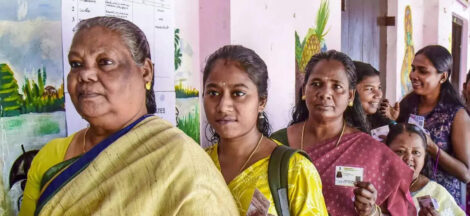By Arun Srivastava
A concerted effort is being made by various farmers and peasant organisations to float a new movement, different in character and dynamics from the one in seventies, when the peasants agitation and farmers movement were two different streams. While the peasants movement symbolised the aspirations and needs of the poor and middle peasantry, the farmers’ movement reflected the demands of the rich and well off farmers’, represented by organisations like Shetkari Sanghathana.
Now the two streams have come together to demand better support price for farm produce and implementation of the report of the Swaminathan Commission. A shift in the agrarian economy, in which the once agricultural labourers now have a major stake in farming and redefining the nature of ownership, has forced the evolution of a new strategy.
The National Commission on Farmers (NCF), chaired by Prof. M. S. Swaminathan, submitted five reports between December 2004 and October 2006. The final report focused on causes of famer distresses and the rise in farmer suicides, and recommended addressing them through a holistic national policy for farmers. The reports contain suggestions to achieve the goal of “faster and more inclusive growth” as envisaged in the Approach to 11th Five Year Plan.
The commission discussed in details the causes for farmers’ distress which had led farmers to commit suicide in recent years. The major causes of the agrarian crisis are: unfinished agenda in land reform, quantity and quality of water, technology fatigue, access, adequacy and timeliness of institutional credit, and opportunities for assured and remunerative marketing. Adverse meteorological factors add to these problems.
The NCF recommended that “Agriculture” be inserted in the Concurrent List of the Constitution. Land reforms are necessary to address the basic issue of access to land for both crops and livestock. Some of the main recommendations included: Distribution of ceiling-surplus and waste lands; preventing diversion of prime agricultural land and forest to corporate sector for non-agricultural purposes; establishment of a National Land Use Advisory Service, which would have the capacity to link land use decisions with ecological meteorological and marketing factors on a location and season specific basis.
Apart from the size of holding, the productivity levels determine the income of the farmers. Per unit area productivity of Indian agriculture is much lower than other major crop producing countries. It is irony that the successive governments did not take these recommendations seriously.
In order to achieve higher growth in productivity in agriculture, the NCF recommended: substantial increase in public investment in agriculture related infrastructure particularly in irrigation, drainage, land development, water conservation, research development and road connectivity etc. The governments offered sops like issuing Kisan Credit Cards but even did not issue joint pattas as collateral.
The Mid-term appraisal of the 10th Plan revealed that India is lagging behind in achieving the Millennium Development Goals of halving hunger by 2015. Therefore, the decline in per capita food grain availability and its unequal distribution have serious implications for food security in both rural and urban areas.
Besides a number of remedial suggestions it also recommended low risk and low cost technologies which can help to provide maximum income to farmers because they cannot cope with the shock of crop failure, particularly those associated with high cost technologies like Bt cotton.
One thing is absolutely clear it is imperative to raise the agricultural competitiveness of farmers with small land holdings. Productivity improvement to increase the marketable surplus must be linked to assured and remunerative marketing opportunities. Structural change in the workforce is taking place in India albeit slowly. In 1961, the percentage of the workforce in agriculture was 75.9% while the number decreased to 59.9% in 1999-2000. But agriculture still provides the bulk of employment in the rural areas. Efforts should be made to create productive employment opportunities and to improve the ‘quality’ of employment.
Incidentally the government claims to have already implemented the National Policy for Farmers (NPF), 2007, which aims to improve economic viability of farming and increase net income of farmers but the benefit is not visible. Had it been perceptible, the farmers would not have the streets.
The decline in agricultural growth coupled with declining profitability in the agriculture sector, in the face of rapid growth of non-farm sector, is one of the major concerns. It is sad no sincere effort is being made to increase needed to increase job opportunities in the farm sector. Little doubt there is a need to focus more on the economic well-being of the farmers, rather than just on production.
“With almost 40 per cent of Indian farmers ready to quit farming, the situation is simply alarming,” says L C Jain, a former member of the Planning Commission. The commission wants the government to make ending “the era of farmers’ suicides and to restore pride and confidence in India’s agricultural capability” its foremost task. The approach and even the draft policy are in direct conflict with several laws announced earlier to make agriculture market-friendly. (IPA Service)
The post Govt Apathy Continues To Depress Agrarian Sector appeared first on Newspack by India Press Agency.



